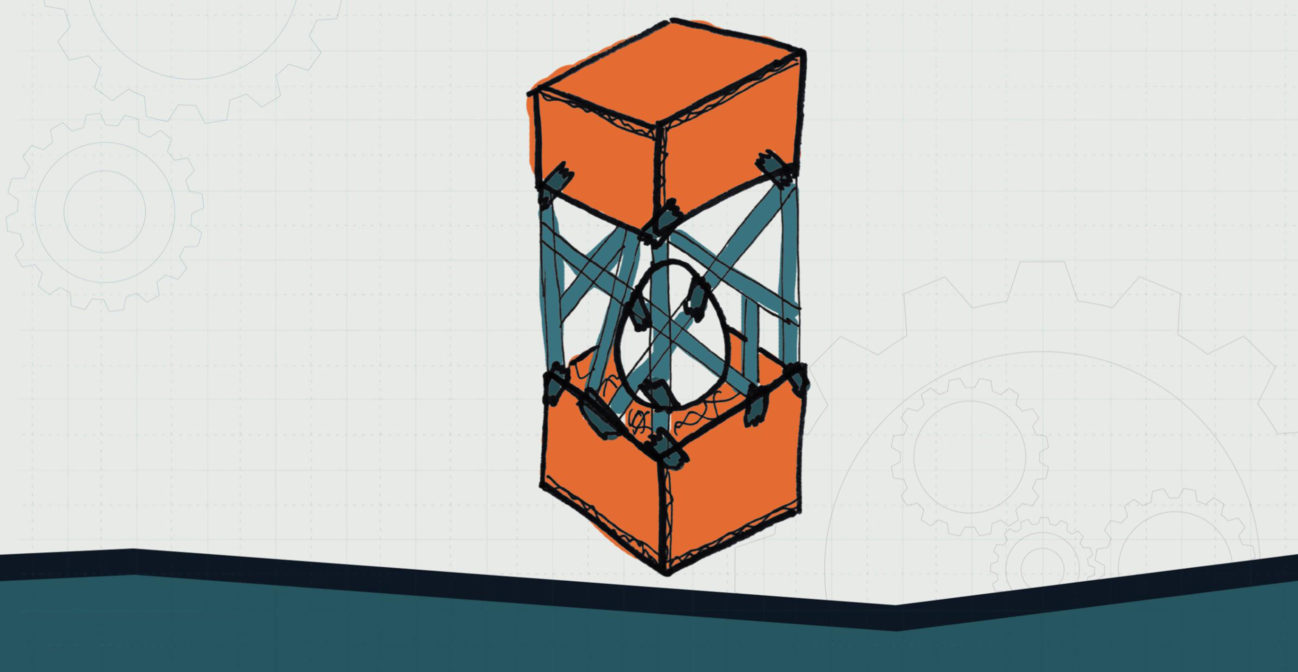Join us for conversations that inspire, recognize, and encourage innovation and best practices in the education profession.
Available on Apple Podcasts, Spotify, Google Podcasts, and more.

ELEMENTARY SCHOOL — LEVEL 3
According to Galileo’s law of falling bodies, objects fall to the earth at a constant acceleration. It is the force of gravity that pulls these objects to the ground. In this exercise, kids will engineer ideas to protect an egg that’s being dropped from different heights. It’s a study of force in motion as kids will be minimizing the impact of collisions to protect their egg.
MATERIALS NEEDED:
❏ Eggs
❏ Rubber bands
❏ Straws
❏ Small boxes
❏ Tape
❏ Cardboard rolls
DIRECTIONS:
Get your kids thinking about momentum, force of impact, and the factors that can lessen the damage the impact creates. Kids should ask which materials are more effective for saving their eggs? Which structures are most protective? Do they prefer a breakaway cage, or a foam-lined box? Why?
OBJECTIVE: Kids will be able to design a device to safely land an egg that is dropped from an elevation.
ESSENTIAL QUESTION(S):
1. Begin by asking child what would happen if an egg was dropped on the floor.
a. After child answers, you could drop an egg to see how easily it breaks.
2. Ask child “how can we create a protector for an egg in case it falls?”
a. Allow child to start brainstorming ideas.
3. Allow child to explore the materials.
a. Ask child to create an investigation of the properties of the materials.
b. Child organizes them in a table based on observed qualities:
i. Hard
ii. Soft
iii. Stretchy, etc.
1. Have child make conclusions about which materials are better for the egg based on their observations.
a. Use facilitating questions to guide and support your child’s thinking.
2. Child can now design their device.
a. Draw pictures of the materials they will use.
b. Explain how their device will be assembled.
c. Reasoning for why their device will work.
1. Child conducts an investigation to test their device without the egg.
a. Observe what happens to the device when it is dropped.
b. Will this protect the egg?
2. Child tests the device with the egg.
a. Did it protect the egg?
b. How would you modify it next time to better protect the egg?
NGSS CONNECTION:
2-PS1-1. Plan and conduct an investigation to describe and classify different kinds ofmaterials by their observable properties.
2-PS1-2. Analyze data obtained from testing different materials to determine which materials have the properties that are best suited for your intended purpose.*
2-PS1-3. Make observations to construct an evidence-based account of how an egg holder made of a small set of pieces can be disassembled and made into a new object.
COMMON CORE CONNECTION:
ELA/Literacy
RI.2.8 Describe how reasons support specific points the author makes in a text.
W.2.7 Participate in shared research and writing projects (e.g., read a number of books on your topic to produce a report; record science observations).
W.2.8 Recall information from experiences or gather information from provided sources to answer a question.
Mathematics
MP.2 Reason abstractly and quantitatively.
MP.4 Model with mathematics.
MP.5 Use appropriate tools strategically.
2.MD.D.10 Draw a picture graph and a bar graph (with single-unit scale) to represent a data set with up to four categories. Solve simple put-together, take-apart, and compare problems using information presented in a bar graph.
DOK:
Level 3: Strategic Thinking
Level 4: Extended Thinking